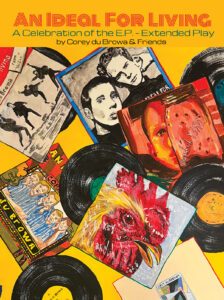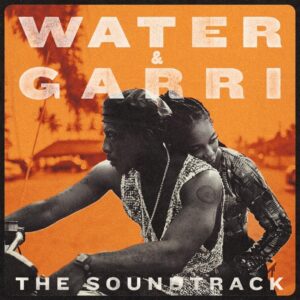Several friends have told me they love the drinks I make on my Instagram page (@architecture_of_the_cocktail) but would like to hear my take on how to set up a home bar. As we head into the holidays, many of us entertaining for the first time in a year and a half, so I have broken down my thoughts on the idea. The basic home bar setup – one that will allow you to make the vast majority of cocktails out there without any obscure spirts or mixers, and without any elaborate preparation of equipment. So here we go. The following will be posted weekly. Feel free to disagree. It’s your bar and your cocktails.
WEEK 1: Tools
WEEK 2: Spirits
WEEK 3: Technique
Week 4: Glassware
Home Bar 101 – WEEK 2: Spirits
THE ESSENTIALS – Summary
There is nothing that aggravates me more than going to a blog to find a recipe, only to have to scroll, and scroll, and scroll until the recipe is shown at the bottom. This week’s dive into spirits ended up being far longer than I had anticipated, so below is a summary of what I think it takes to make an essentially stocked home bar. Beyond that, I have gone into greater depth on my reasons, as well as alternatives to those choices. So here is a high level list, and you can check it out and move on. Are they the best selections? No. This is an attempt to find quality spirits and modifiers that won’t break the bank. But I invite you to read on and spend time diving deeper into each spirit and my selections. Enjoy!
Vodka – General: Really – anything
Vodka – Martini: Absolut ELYX
Gin: Beefeaters London Dry
Bourbon: Elijah Craig Small Batch/Buffalo Trace
Rye: Rittenhouse Rye 100
Tequila: Espolon Blanco
Rum – Light: Cruzan Aged Light Rum
Rum – Dark: Bacardi Ocho
Sweet Vermouth: Cocchi Vermouth di Torino
Dry Vermouth: Dolin Dry
Triple Sec: Cointreau
Aperitif: Campari
Amaro: Amaro Averna
THE ESSENTIALS – In Depth

Vodka
When I was a senior in college I spent a week in the former Soviet Union, and several friends and I snuck three Soviets our age into the international hotel we were staying in (against the law at the time for citizens) and spent the evening in the bar toasting each other with shots of vodka, as was the custom. It was (still is, I assume) bad form to cap a bottle of vodka when toasting, and people kept ordering additional bottles. The night went downhill quickly – but to this day that is the best memory of drinking vodka that I have. And truth be told – that is still the best use of the spirit in my opinion. By law, vodka must be colorless and flavorless (unless flavored), so there is very little difference between brands. It is basically diluted, well-made Everclear. There is a good reason vodka has the best advertising and marketing. The brand, logo, and bottle are the primary differences. You can definitely tell if a vodka is cheap or poorly made, and while experts will tell you there are subtle differences between brands, once you dump in juice or ginger beer, it’s a tossup. So, unless you are a vodka martini drinker – it just doesn’t matter. Unless it’s a cool bottle.
My Recommendations:
Really, anything. I buy Kirkland, unless it is for a martini. I have been told that potato vodka has a better mouth-feel, but you are likely getting vodka made from various grains – again just like Everclear. But if I must . . .
Absolut ELYX ($30) for vodka martinis. Very clean on the nose and has a very silly mouth feel and a very slight spice finish. This one is different.
Russian Standard Platinum Vodka ($25-$30) is very crisp and smooth with just a hint of spice at the end. Also wonderful in a martini.
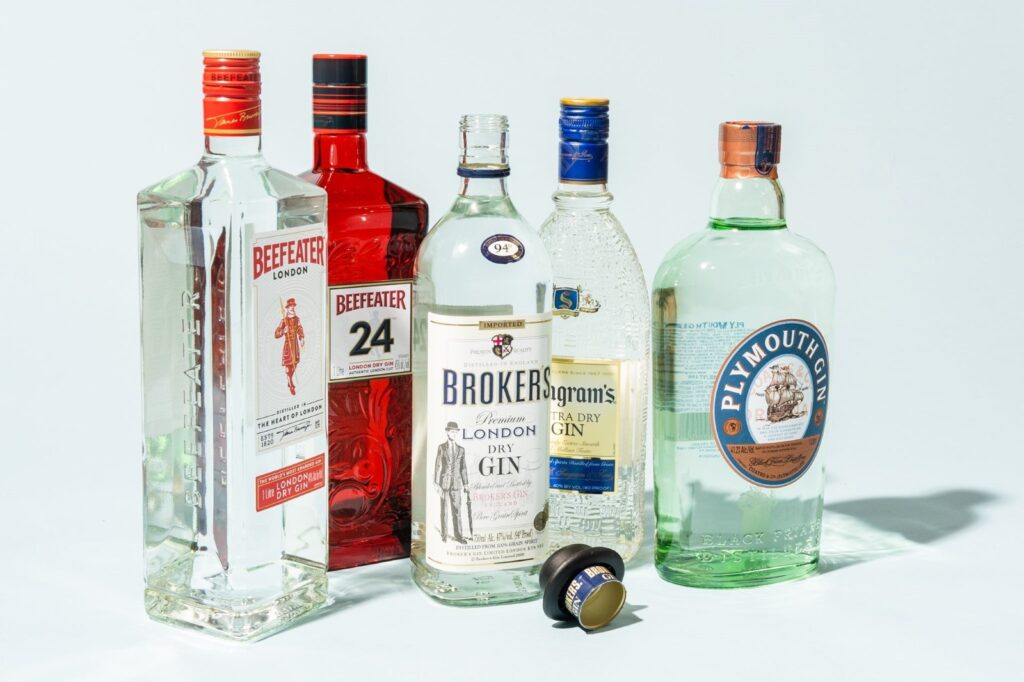
Gin
If we are being honest, gin is basically vodka flavored with botanicals. But man, do those botanicals create diversity. Gin primarily falls into two different categories: London dry and botanical/contemporary. All gin needs to be built on a foundation of juniper, but almost all gins available use a proprietary list of botanicals consisting of herbs, vegetables, and fruit. London Gin, or London Dry Gin designation was created to counter the many questionable and poor gins produced in the 1700s and 1800s. All flavorings and botanicals must be added prior to distillation (or second distillation), it must be colorless, with no sweeteners or sugar added (hence the dry designation). The addition of sugar was common to help hide harsh and poorly made gin at the time. Gins like Hendrick’s have flavor elements added after distillation, and are referred officially as ‘distilled gin’, and unofficially as botanical or contemporary gin. All gins must be initially distilled as a neutral spirit (just like vodka) and must be redistilled “in the presence of Juniperus communis L. and other botanicals.” Botanical gins then may alter the spirit with additional botanicals, citrus, or vegetables (in the case of Hendrick’s – cucumber is a major additive).
In addition to these two primary types of gin, there has been a resurgence in older gins, and those include Jenever (the original gin from the Netherlands – once William the Orange brought jenever to England it was retooled. Jenever is not what we think of as gin today) which has a much heavier malt flavor profile, Old Tom gin (the direct ancestor of London dry has sweeteners added and was the street name for gin from the mid-1700 to the end of the 1800s when it was eclipsed by London dry) which is a slightly sweeter profile, and Plymouth gin. Plymouth is technically a separate category of gin, although only one company makes it and has been making it the same way (in Plymouth, England) since 1793. Fun fact – gin is the only spirit made to be mixed with something else.
My Recommendations:
So many great gins – and so many favorites
Mixing Gin: Beefeaters Gin. I believe this is the best bang-for-the-buck London dry out there. A bottle lands somewhere in the neighborhood of $20 and makes an excellent cocktail. It has a nice juniper forward profile with notes of citrus. Not really the bottle I reach for if I’m making a martini or a gin and tonic, but if you are only going to buy one gin – this is the one.
Martini Gin: If you love a crisp, dry martini, you may want a second, better gin. I tend to like Tanqueray No. 10 ($30-$35). It is smooth and pushes the citrus slightly toward grapefruit rather than lemon or orange. More expensive than Beefeaters, but not terribly so.
G&T Gin: Most London dry gins make a great gin and tonic, along with fresh lime. But on a hot afternoon in the summer, I like a Hendrick’s ($35) G&T with a slice, or better yet a ribbon, of cucumber.
Alternates:
Plymouth Gin ($30) is called out specifically in 23 different cocktails in The Savoy Cocktail Book. It is even drier than a London dry and has a spicier finish. It brings a unique flavor to gin cocktails.
Empress 1908 Gin ($35) is a newcomer to the gin game. Created in partnership between Victoria Distillers and the historic Fairmont Empress Hotel in Victoria, British Columbia. It includes the house tea from the hotel and butterfly pea blossoms, giving it a beautiful indigo color. It has a wonderful flavor profile, but the showy aspect of this gin is that the natural color from the Butterfly Pea blossoms changes color when it comes into contact with an acid or a base modifier.
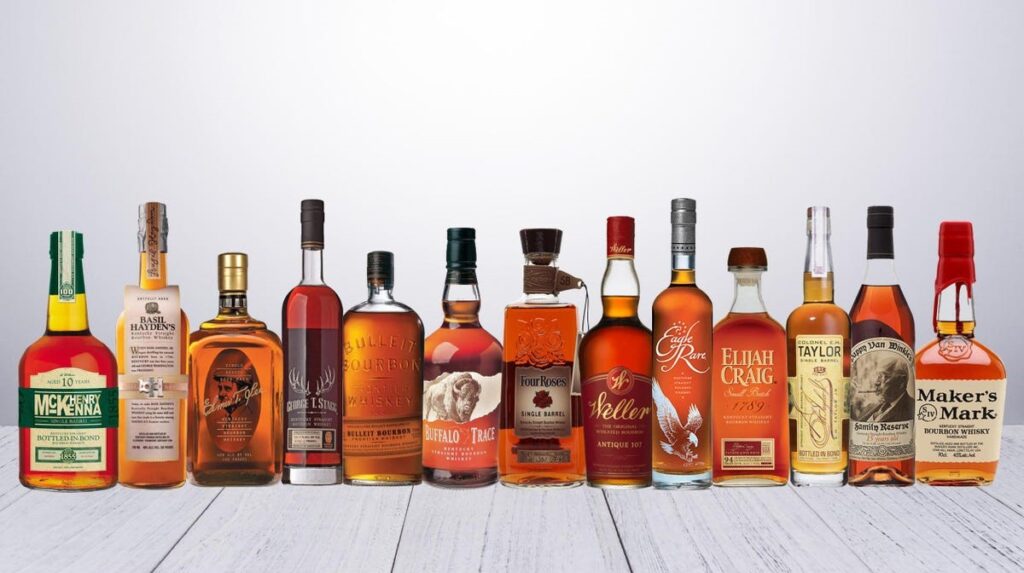
Bourbon
If you are putting together a home bar, and don’t want to break the bank, bourbon and rye are considered interchangeable. Many like one much better than the other. I look at them as two different ingredients (brown and powdered are both sugars, but not interchangeable). I would suggest starting with a bourbon and experiment with the rye before investing in another bottle.
I love bourbon. Really, I do. But I don’t understand the fanaticism that revolves around bourbon. Compared to gin, bourbon has limited range. When settlers landed west of the Smokey Mountains in the early 1800s, they were amazed at the quality of the soil. And one thing that grew really, really well was the native corn. The problem was it was a long, treacherous journey to the east coast to sell it, and corn was heavy and difficult to transport. But the settlers in the New World had been fermenting and distilling literally since they got off the boat. So they made corn whiskey. It was shelf stable and easier to transport. Most of it was distilled on the family farm for personal use in the beginning, but a few enterprising souls began aging it in barrels – and bourbon was created. It was second fiddle to rye until prohibition when the government gave out incentives to farmers to grow cereal grains, and corn took off while rye all but disappeared. Once again, what to do with all that excess corn – make whiskey and bourbon!
In my mind, there are two types of bourbon (ignoring a third type – poorly made). Mixing bourbon and sipping bourbon. You can do either with both, but why mix a $100 bottle of bourbon with other ingredients, and why sip a lesser refined spirit. I am a believer that to make a great cocktail you need to start with great ingredients – but there is a limit.
My Recommendations:
There are a number of really well-made and affordable bourbons to mix with. My go-to is Elijah Craig Small Batch, but I am a fan of Buffalo Trace as well (both in the $25-$30 range). Both have fruit and vanilla on the nose, and both are on the sweet side with a woody toasty finish. I like my bourbon sweet and my rye spicy. They play well in a mixed drink and bring a lot to the table without dominating the cocktail.
If you want to be a high-falutin bourbon connoisseur, you may want a second bourbon to drink neat or with an ice chip. If only to be able to impress a guest. I love a really great bourbon neat (and by neat, it should be served room temperature with two or three drops of cold water to open the spirit up). You can spend hundreds on a single bottle (actually you can easily spend a lot more than that) but a bottle of Colonel Taylor Small Batch, Eagle Rare, or Blanton’s will give you instant street cred and an amazing bourbon too (if you can find them). But if you hate the taste of whiskey, just go with the Elijah Craig to be ready if someone wants an Old Fashioned.
Alternates:
I am really fond of Yellowstone Select ($35) and Blade and Bow ($45-$50).
If you need a more aggressive bourbon for a cocktail, I like Wild Turkey 101. Higher in proof (101 vs. 80 to 90), it has a burn from the higher alcohol content but works when matched with stronger mixers or flavors.
And last, although not technically a bourbon, I really love Uncle Nearest 1884 Tennessee Whiskey ($50 to $55). It is a great, great whiskey – sweeter than its cousin bourbon – and has an amazing story. I won’t go into it now but look it up.

Rye
When the settlers came to the New World, they brought grape vines and grain with them to plant. The pilgrims and puritans drank a lot of alcohol. But not because they were drunks (well, some of them were). Water could be dangerous, but even a mildly alcoholic beverage was safe to drink. The new immigrants were unpleasantly surprised to find the climate in their new home was not conducive to most of what they brought to grow and distill. Except rye. Rye took off, especially in Pennsylvania, and it made great whiskey (remember the Whiskey Rebellion from history class?). People talk about bourbon as being the all-American spirit, but this country was formed and settled with rye. It was king until Prohibition, and most of the pre-prohibition cocktails are based on rye. Bourbon must be made with a minimum of 51% corn (although it often reaches 60 to 70%) and rounds out the mash bill with a mix of rye and malted barley. Rye, obviously, must be made with 51% rye grain, and rounds out with corn and malted barley. The corn brings the sweetness to the bourbon and the rye grain gives the spirit a distinct spice.
My Recommendations:
Hands down, my cocktail rye of choice is Rittenhouse Rye 100. It is inexpensive ($25), and while it is a little hot for my taste neat (at 100 proof), it does not get pushed around in a cocktail. It smells of dried fruit and spices, and has a nice oak, bark, and nutmeg taste on the tongue.
Sazarac Rye can be difficult to find, but it is a well-made rye and not terribly expensive ($30). It was formulated specifically for the Sazerac cocktail by the Sazerac Company (and now owned by Buffalo Trace). At 90 proof it is less aggressive, but still full of fruit and spice flavors.
Alternates:
Templeton Rye ($32) is a great all around rye. Good flavor, and very affordable.
Jefferson’s Straight Rye Whiskey Finished in Cognac Casks is out of this world ($80). This is not a mixing rye and is a brilliant mix of a spicy rye and the rich refinement of the cognac (and I do love cognac). A typical rye has a dry finish, but the tail end has a wonderful silkiness and orange and honey notes.
Whistle Pig 10 is my special occasion rye ($85-90). It is aged in virgin white oak barrels and finished in bourbon barrels. It is a creamy, silky rye that make you understand the purpose of aging a spirit that long.

Agave
When most people think of agave spirits, they primarily think of blanco tequila. But the agave spirits have come a long, long way from the upside down margaritas and salt-tequila-lime shots of my college days. The last two decades have been wonderful for all the agave spirits, with more entering the market every year. But the key thing to remember is that all tequilas are mezcals, but very few mezcals are tequila. Mezcal is the overarching term for all the spirits that come from the agave plant. The indigenous Indians of Mexico have been fermenting the juice from the hearts of the agave for 1,000 years, and some (but not many) believe agave was being distilled primitively prior to the arrival of the Spanish. But it was the conquering Spanish who created what we now know of as mezcal. The invading army quickly ran out of brandy and needed something to drink other than water, so they began distilling the agave in the early 1500s, predating the creation of bourbon, rye, and rum.
In 1795, Jose Cuervo became the first licensed distiller of mezcal de Tequila – mezcal produced in the village of Tequila. There are hundreds of varieties of the agave plant, but the blue agave grows in abundance around Tequila, and over time this became the primary agave used in the production of what came to be known simply as Tequila (the legal requirement is that a spirit must be made with a minimum of 51% blue agave to be called Tequila, but the better brands are made with 100% blue agave).
But since the Spanish arrived (arrived is such a nice, neural term, isn’t it?), families and villages have been making their own mezcals. Many varieties of agave grow regionally, and like sugar cane, impart a significant terroir into the final product. This creates a rich tapestry of mezcals across Mexico. It makes classification very difficult, but offers hundreds of different mezcals, most so local that you will probably never taste them unless you travel there.
Mezcal experienced an explosion in the first part of the 2010s, with its smokey, vegetal taste. Mezcal is like Brussel sprouts or a hoppy IPA. You may not love it in the beginning, but if you keep trying you likely will in the end. This search for the next mezcal is beginning to bring a number of other mezcal subsets to the market. One of my current obsessions is Raicilla, a mezcal made with (primarily) the Maximillia agave. It lands somewhere in the middle between a blanco tequila and a smokey mezcal.
Aged agave spirits are beginning to gain popularity, but you have to be careful. Often what the spirit gains from being aged in a barrel can overshadow what makes the agave spirit what it is. And forget all that garbage about a worm. The worm was added as a marketing ploy back in the 1950s, as a way to move poor product. If you see a worm in the bottle, that’s a sure sign that it is crap.
My Recommendations:
Every bar needs at least one tequila – if only to make a margarita. I like Espolon Blanco tequila ($25), but really there are so many that work fine in a margarita.
But tequila is traditionally drunk neat in a shot glass (not necessarily as a shot). So if you don’t plan to smother your tequila in lime juice and triple sec, buy a good tequila. Casamigos Blanco ($45-$50). It is a soft tequila, and works great in a margarita, but wonderful to sip as well.
This will no doubt start an argument, but I think Del Maguey Vida is the best all around mezcal ($40). I was given a bottle of this brought back from Mexico before mezcals were even being distributed in America. It is a single village, artisanal mezcal, full of smoke and fruit notes.
A reposado tequila has been aged between 2 and 12 months in oak barrels. Long enough to get the highlights from the wood, but still retain the original characteristics of the tequila. Herradura Reposado Tequila ($36-$40) is a great reposado tequila that is well balanced – not too spicy and not to sweet – and as home neat as it is in a cocktail. There are better reposado tequilas (and cheaper) but this checks all the boxes.
For an amazing and affordable aged tequila, I am a fan of el Mayor Añejo Tequila ($35). An añejo tequila is aged from one to three years in oak barrels (añejo is Spanish for old, or vintage). There are far more expensive and arguably better aged tequilas, but this hits a sweet spot between price and taste.
I love Raicilla Mexicat ($60). Smooth and delightful to sip. Not easy to find (yet), but worth it.
Alternates:
Banhez Mezcal ($32) is wonderful in cocktails, as is Ilegal Joven Mezcal ($35). If you are new to mezcal, and unsure – go with the Ilegal Joven. Smooth, less smokey, with fruit notes.
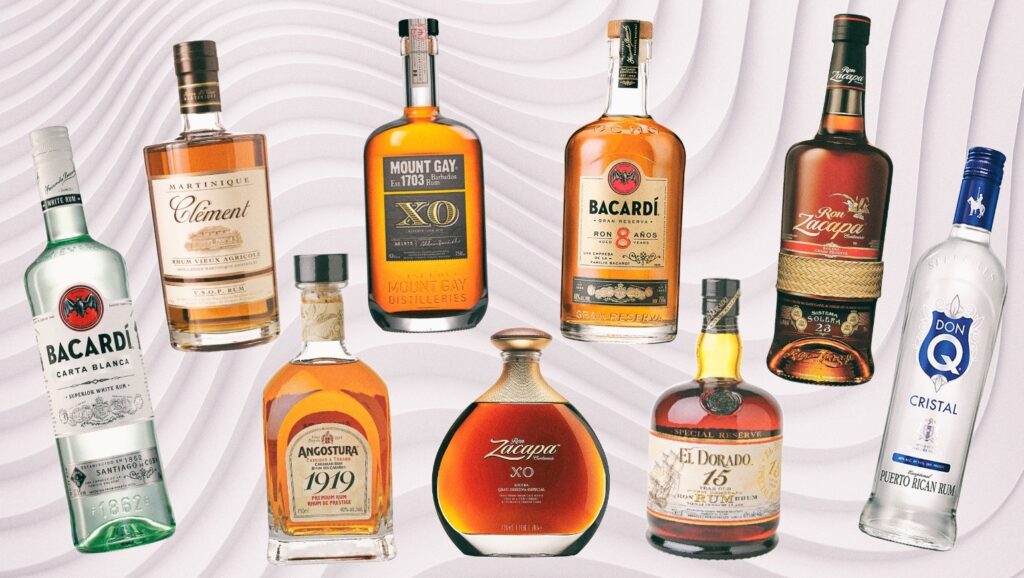
Rum
There are strict rules for the ingredients and processes of making bourbon, rye, vodka, and even gin. But rum? It’s the Wild West out there. Entire books have been dedicated to rum and its crazy history, but to condense it to a couple of sentences, here’s what you need to know. Legend has it rum was created by African slaves making sugar from sugar cane in the Caribbean in the latter half of the 1600s. They used the waste byproduct of sugar cane production (molasses), which was often dumped into the ocean to get rid of it, but still retained enough sugar that it could be fermented. The plantation owners allowed the slaves to ferment the molasses and to distill it to drink, because they felt giving the slaves a chance to blow off steam on their one day off kept them in check. It soon made its way from the slaves the greater population because it was highly alcoholic, plentiful, and cheap. It was harsh, awful tasting, and called kill-devil at the time. It began to be given to sailors in the British Royal Navy in the mid-1700s as a daily ration (a practice that lasted until 1970). In 1862 Don Facundo Bacardí Massó in Santiago de Cuba purchased an existing distillery and began producing a filtered, smooth, light-bodied spirit that would change the way we drink rum (throughout the 1800s rum was considered the alcohol that alcoholics drank and embodied everything bad about alcohol in America).
There are basically three main types of rum: Spanish, English, and French. All are spirits that are derived indirectly or directly from sugar cane, with Spanish and English rums being made from molasses after sugar has been produced, and French produced directly from the sugar cane itself (and often referred to as rhum). The Spanish and English are similar, with the Spanish (and Cuban) rums being smoother, sweet, and light, and English being heavier with bold flavors. Jamaican, a type of English rum is almost a style itself, with many recipes calling out Jamaican rum for their very bold, funky flavors – referred to as hogo. The French were late to the game, so they bypassed the sugar production process, and ferment the juice pressed directly from the cane. Referred to as Rhum Agricole, this spirit is complex and takes a lot from the soil and transfers it to the finish product (much like wine – referred to as terroir), resulting in a vegetal, floral, grassy, complex rum that ends up being tied the land that the cane came from.
Types of rum:
Light – smooth and non, or lightly aged. Filtered before bottling.
Gold – aged longer in casks than light, but only enough to give it slightly more complexity than light. However, there is no aging requirement to be called gold.
Dark – aged (maybe) longer and far more complex than light or gold. Considered a sipping rum but is often used to great success in cocktails. Especially in combination with other rums. Like gold rums, there is no aging requirement for dark rum.
Jamaican – funky and strongly flavored.
Modified Rums (spiced/black/black strap) – Originally a cheap rum that has been modified to pass itself off as an aged rum. The old joke is the way you make spiced rum is to start with a poorly made rum you can’t sell and add spice until it is drinkable. Black rum is a rum that is – black. There are a lot of poor spiced and black rums out there – but a lot of exceptional ones too. However, there is no requirement as to what makes rum a spiced or black (or black strap for that matter) rum.
Demerara – Demerara rum is made on the island of Guyana, from sugar cane growing along the banks of the Demerara River. The hot, humid climate accelerated the aging process, resulting in a sweet, smokey rum.
Naval or Overproof – Rum that it’s typically above 120 proof. When the British Royal Navy purchased rum in the early days, it was first added to gunpowder and lit. If the gunpowder caught fire, they knew the rum had not been watered down. This is where the term ‘proof’ comes from. If it burned, it was proof that it hadn’t been cut or diluted. If not, it was considered ‘underproof.’
So while you can get away with only one or two rums in your liquor cabinet, it is easy to go down the rabbit hole, because most are so unique to each other. Pick the rums that compliment what you drink – or plan to serve. Rum and coke? I like a darker rum. Daiquiri? Use a light (although a dark rum takes a daiquiri to a different and still delicious place). Dark and Stormy? Go with a black (preferably Goslings Black Strap). Just want to sip? Aged or dark.
My Recommendations:
If you are only going to have one rum, as much as I hate to say it, you can’t go wrong with Bacardi Superior ($10-$15). I hate to say it because the brand spent so much energy and money throughout the last century trying to convince Americans that their light rum was the only rum out there. Hundreds of smaller, local rums never survived the competition, and only by the work of several cocktail historians have some of them been recreated.
My personal choice for light rum is Cruzan Aged Light Rum ($12-$15). It is smooth, yet more complex than the Bacardi, thanks to the time spent in American oak casks. It is filtered again retaining its almost colorless appearance. Brilliant in a cocktail.
For a dark rum, Meyers is the most bang for your buck ($20-$25). But I only use it for cocktails. But spend a couple extra dollars and grab a bottle of Bacardi Ocho ($30). There are literally hundreds of great dark rums, but I don’t hesitate on recommending this one. Good enough to sip, but cheap enough to toss into a glass of Coke and ice.
Alternates:
So many rums in so many styles. A few of my favorites:
Overproof White: Wray & Nephew White Overproof Rum ($25)
Overproof Dark: Plantation O.F.T.D Overproof Rum ($35)
Jamaican: Smith & Cross Traditional ($30-$35)
Aged Jamaican: Appleton Estate 8 Reserve ($35)
Black: Goslings Black Seal Rum ($20)
Demerara: El Dorado 3 (white – $15) or 5 (dark/aged- $20)
Other: Plantation Stiggins Fancy Pineapple Rum (*not a pineapple flavored rum) ($30)
And far, far too many other to list.

Vermouth
Vermouths are tricky. They are basically a fortified (alcohol added) and aromatized (botanicals added) wine, but don’t have a high enough alcohol content to be shelf stable. You need to refrigerate vermouth, and most experts agree you can get two to three months out of it. Can you go longer refrigerated? Probably (I do), but they will begin to deteriorate. In my opinion, that takes a while for it to be noticeable to the average drinker. That said, unless you drink a martini or a Manhattan every night, try to by a smaller (375ml) bottle, so it doesn’t sit in your refrigerator, talking up space. The majority of vermouth is either sweet/Italian/red or dry/French/white. Although you hear sweet vermouth sometimes referred to as Italian, sweet vermouth is also made in France, and dry is made in Italy. As well as Spain and the United States.
My Recommendations:
Everyone seems to have a favorite vermouth. Most are very affordable, so try out a number.
Dry Vermouth
Dolin Dry ($15-18) is my go-to dry vermouth. It is great in a martini (isn’t that the real test). Many vermouths have a faint bitter or acidity to them, but the Dolin is light and balanced. Perfect when you only have two ingredients to work with.
Martini & Rossi ($10) is cheaper and has a bit more sweetness and a ‘grapeiness’ to it, but it works great with gin.
Sweet Vermouth
The gold standard in sweet vermouth is Carpano Antica ($30), a robust and herbal vermouth, and a perfect choice for a Manhattan. But it is on the expensive side. If your boss is coming over, splurge on a bottle. But not your brother-in-law.
Cocchi Vermouth di Torino ($20) is 2/3 the cost of the Carpano Antica, but still a great sweet vermouth – especially in a Negroni.
Gallo Sweet Vermouth ($7) punches way above its weight class. Your weeknight sweet vermouth.
Alternates:
A blanc vermouth is far less common than the traditional dry or sweet but lies right in the middle. I am especially fond of Dolin Blanc ($12-$15). It is sweeter and more floral than the traditional dry, and a wonderful addition to a cocktail.
Punt e Mes ($20) is one of the bitterest and sweetest of all the sweet vermouths. It translates to ‘point and a half’ – one point sweet plus a half a point bitter – and is said to be halfway between a sweet vermouth and Campari. It can be used anywhere sweet vermouth is used,

Triple Sec
Triple Sec is probably the one liqueur that everyone is familiar with. Margaritas and Cosmopolitans call for it, as well as a huge number of cocktails. So, you need a bottle. It was created in 1834 by Jean-Baptiste Combier in France and is made by macerating sun-dried orange peels in a neutral alcohol. It is then triple distilled (sec means to dry or distill in French) to produce the end product. Combier Triple Sec has been made in the same copper stills since 1834, but in 1849, Edouard-Jean and Adolphe Cointreau opened their distillery and began producing Cointreau. Although Combier is older, Cointreau is by far the world’s best selling Triple Sec. But make sure you are buying 40% alcohol triple sec (Cointreau, Combier, and Grand Marnier all are). This can be significant, since most cocktail recipes are built around the higher proof liqueurs, and many are bottled at 27% to 30%.
My Recommendations:
Just buy the damn Cointreau ($25 for 375ml, $35 for 750ml). There are tons of cheaper brands – and that is what they are. Cheaper versions.
Grand Mariner ($40 for 750ml) is also a well-made product, and a step up from Cointreau. Grand Marnier ups the game and combines triple sec with cognac. This results in a richer, more complex orange liqueur. If you have room in your bar, buy both and try them out. They are interchangeable, so flip back and forth when making margaritas. But you really only need one.
Alternates:
I really like Pierre Ferrand Dry Curaçao ($30). Triple Sec is made only with orange peels (usually a combination of bitter and sweet), while an orange curaçao may include herbs. The Pierre Ferrand was developed to mix with rums and cognacs and compliments them brilliantly.

Aperitif/Amaro
Like rum and gin there is little in the way of standards when it comes to these bitter modifiers. Both contain a mixture of roots, herbs, and fruit that have been macerated in a neutral spirit and distilled. Our bodies are wired to avoid bitter tastes, as this is typically a signal that there may be poison in what was just eaten. An aperitif is typically taken before a meal and increases salivation (to dilute the poison) and jump starts the digestive system in the stomach. With much cross over, a digestif is taken after a meal, and can help settle a full stomach and ramps up the intestine (to get that poison out!). There is too much to cover here but typically an aperitif is red, and a digestif is brown. Simple right?.
Both were created historically in an explosion of medicinal creativity during the 1800s and most adhere to closely held recipes that haven’t changed in centuries. They are intended to slow down the process of a meal, and traditionally served by themselves, either at room temperature, cold, or with ice before or after the food is served. However, for over 100 years they have been finding their way into cocktails to add a bitter component.
My Recommendations:
A well-stocked bar really needs a bottle of the bitter Campari ($20-$25). It is essential for the Negroni, and any respectable home bar needs to be able to make that iconic drink.
Not necessary, but there are few things as delightful on a hot summer day than an Aperol Spritz. Aperol ($20) is far less bitter than Campari, but it still has a bitterness to it.
I would have at least one Amaro on hand. There are a number of wonderful ones, but I would recommend either Amaro Averna ($30) or Ramazzotti ($25). Both are wonderful after a meal (2 to 3oz) or before bed, but slide seamlessly in place of sweet vermouth, with unexpected results.
Alternates:
Unless you find yourself going in deep for either, these two will likely be all you will ever need. That said, surprisingly Jägermeister ($25) is actually a wonderful digestif (even if it isn’t technically an Amaro – long story) by itself after a meal. Just don’t drop it into a glass of energy drink.
Other
Vodka, Bourbon, Rye, Gin, Tequila, Rum, Vermouth, Triple Sec, and Aperitif. With the addition of fruit juice and simple syrup (and maybe ginger beer or milk/cream), this collection should enable you to make most of the classic cocktails out there. But depending on your taste, you may want to add some of the following. Important, even essential, but not for everyone.
Scotch: For mixing I use Glenbar Single Malt Scotch Whiskey ($40-$45). Not the scotch I drink neat, but wonderful in a cocktail. A friend told me you should never mix with a scotch that is old enough to drive – words to live by. Obviously, if you are drinking it neat – find what you love and love drinking it.
Cognac: Many classic cocktails require cognac. Hennessy VS Cognac ($40) is a great mixing spirit, but if you are going to put something into a brandy snifter, go all in with the Pierre Ferrand Ambre ($55-$60).
Irish Whiskey: there are so many great ones out there, from the simple Jameson ($20-$25) to my personal favorite, Redbreast 12-Year ($55-$60). If you are Irish (like me) you pretty much have to have at least one of these (or more, like me) on the shelf.
Coffee Liqueur: Oh the things you can make with a bottle of Kahlúa Coffee Liqueur ($22).
Cachaça: Rhum Agricole’s kissing cousin. A Brazilian spirit derived from the sugar cane. Go with unaged Novo Fogo Silver ($35) or aged Avua Amburana ($45).
Absinthe: Hated by many, loved by as many. Absinthe is required in an amazing number of pre-prohibition cocktails. It is used primarily as a spice – meaning sparingly. Since it was once again allowed to e sold in the us (since 2007) it has once again found a following. If you want to get into historic cocktails, pick up a bottle of Lucid Superior Absinthe. You can buy a 750ml bottle for $60, but my advice is pick up a 375ml bottle ($30). It will still last forever.
Sherry, liqueurs, crème, eau de vie – there are so many things that are beyond the basic bar and are needed for only niche drinks (or seasonal/holiday drinks). And you can get out of hand quickly. I just hit 500 different cocktails on my Instagram page, but that takes quite a bar (176 bottles and counting). So, work on the classics, then find something you love and master that.
Next week: Technique.
Cheers!
Bill
AotCB-047

